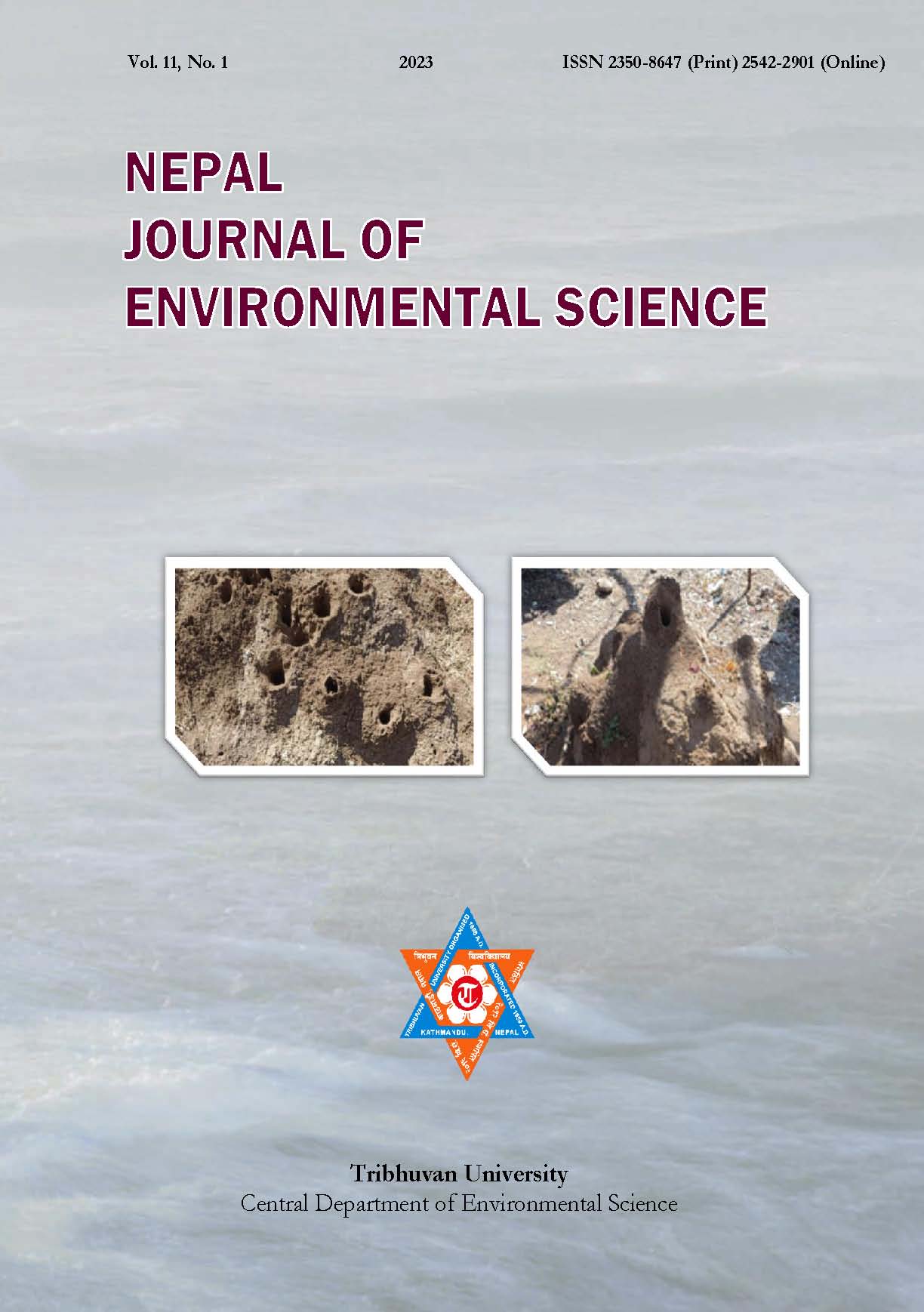Physicochemical and microbial assessment of effluent from slaughter slab in Kirtipur Municipality, Kathmandu, Nepal
DOI:
https://doi.org/10.3126/njes.v11i1.50957Keywords:
Environmental impact, meat shop, slaughter slab, total coliform count, wastewaterAbstract
The number of slaughterhouse facilities and retail meat shops has been on the rise, leading to an increase in the amount of wastewater they produce. Wastewater is hazardous to the environment as it causes deoxygenation in water bodies, pollutes the groundwater, and spreads several diseases if released untreated. The study was conducted in slaughter slabs and retail meat shops in Kirtipur Municipality to evaluate the physicochemical characteristics and microbial status of wastewater. Fifteen wastewater samples were collected and analyzed as per APHA-AWWA-WEF for physicochemical and total coliform count. The average values of chemical oxygen demand (COD) and biological oxygen demand (BOD) were 574.5 mg/L and 284.5 mg/L, respectively and exceeded generic standards for tolerance limits for industrial effluent. The average level of total coliform count in the fresh water and wastewater were 733 CFU/100 mL and 7.72 × 104 CFU/100 mL, respectively. There is a significant difference in the total coliform count in freshwater (p value (T > t) = 0.01 < 0.05) and wastewater (p value (T>t) = 0.00 < 0.05). Slaughtering of animals without adhering to hygienic rules leads to a higher load of organic pollutants and other chemical contaminants in wastewater and has detrimental health effects on human, animal, and the environment. The slaughter slabs in Kirtipur Municipality need to be inspected during the process of slaughtering.
Downloads
Downloads
Published
How to Cite
Issue
Section
License
Copyright (c) 2023 Central Department of Environmental Science, Tribhuvan University

This work is licensed under a Creative Commons Attribution-NonCommercial 4.0 International License.
This license enables reusers to distribute, remix, adapt, and build upon the material in any medium or format for noncommercial purposes only, and only so long as attribution is given to the creator.




